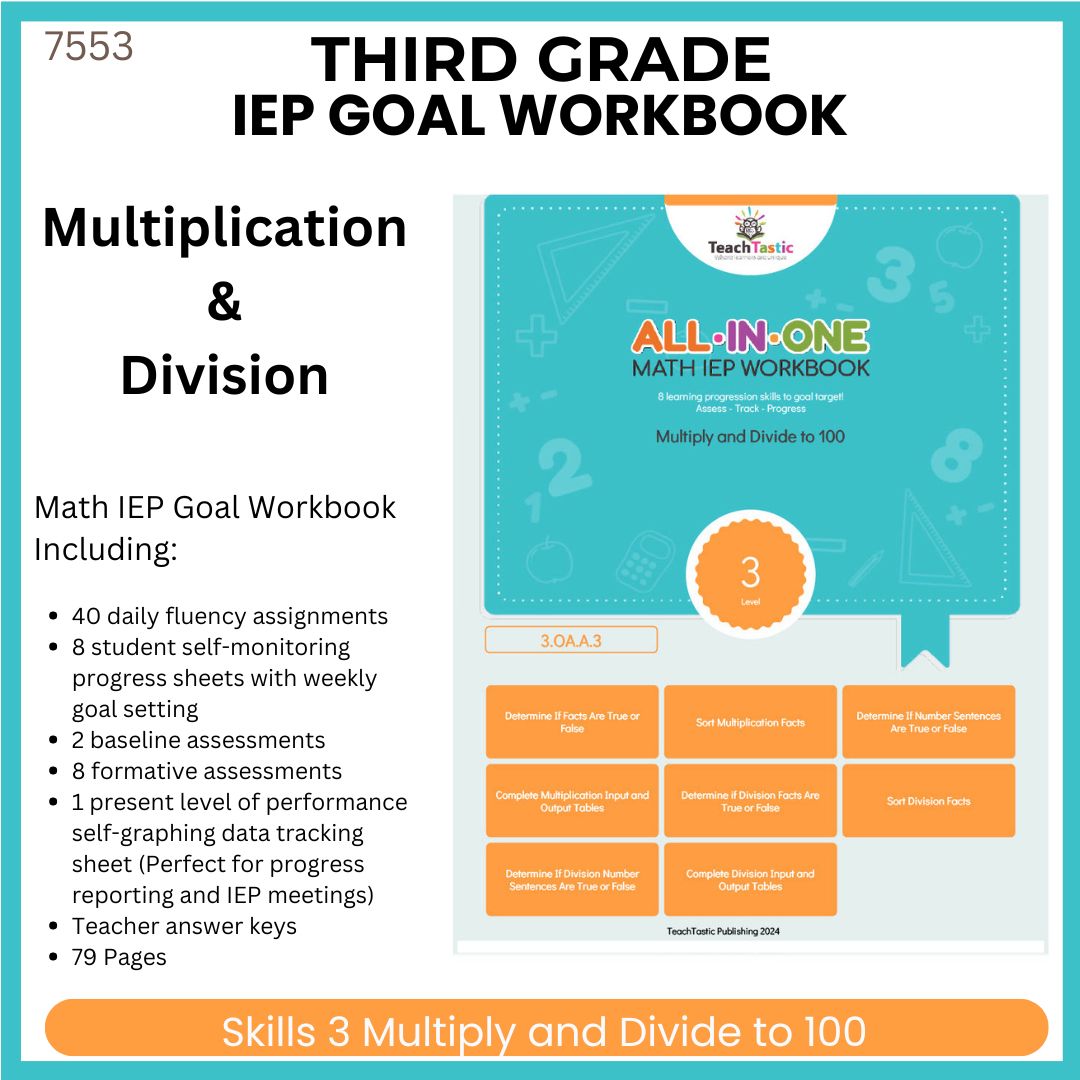Lesson Plan Template
-
Grade
-
Subject
-
Section
Third
Math
-
Competency
Division fluency up to 10
-
Aligned Standards
Operations and Algebraic Thinking
-
Strand
3.OA.A.3
-
Vocabulary
Quotient: The result of dividing one number by another.
Compare: To evaluate the difference or similarity between two numbers.
Division Fact: A division problem that involves basic numbers and operations.
Fact Sorter
Sort Division Facts
Prerequisite Skill
Materials and Preparation
- Whiteboard and markers
- TeachTastic Worksheet Pack for Sorting Division Facts
- Division flashcards
- Large number cards labeled "Equal to 4" and "Equal to 5"
- Scissors and glue sticks (for sorting activity)
Learning Objectives
- Students will divide numbers to find the quotient.
- Students will compare the quotient to specific values (e.g., 4 or 5).
- Students will correctly sort division facts into categories based on the quotient.
Introduction
Begin the lesson by reviewing basic division facts with the students. Discuss how division is the process of splitting a number into equal parts and finding the quotient. Introduce the concept of sorting by using a simple example, such as comparing different groups of objects. Explain that today they will be sorting division facts by comparing the quotients to specific numbers like 4 and 5.
Explicit Instruction/Teacher modeling
Present a few division problems on the board, such as 20÷5, 50÷10, and 40÷10. Solve each one step by step, showing how to find the quotient. Write out each division fact clearly: 20÷5=4, 50÷10=5, etc. Explain that after solving the division problem, they will compare the quotient to see if it matches the target number (4 or 5). Use the large number cards to sort the division facts into the appropriate categories.
Guided Practice
Hand out the TeachTastic Worksheet Pack for Sorting Division Facts. Work through the first few problems as a class, guiding students through the division process and then helping them compare the quotient to the target numbers. Ask them to place the division facts in the correct category on their worksheet: "Equal to 4" or "Equal to 5." Use the large number cards on the board to visually categorize the division facts as you go along.
Independent Practice
Allow students to complete the remaining problems in the TeachTastic Worksheet Pack independently. They should solve the division problems, find the quotient, and sort the facts into the correct categories. Circulate the room to offer guidance and ensure that students are correctly applying the division and comparison process.
Differentiation
Support
- Provide additional practice with division tables or charts for students who need reinforcement of basic division facts.
- Offer visual aids, such as counters or number lines, to help students understand the division process.
- Pair struggling students with a peer tutor who can guide them through the steps of solving and sorting the division facts.
Extension
- Challenge students to create their own set of division problems and sort them into categories.
- Introduce more complex division problems involving larger numbers or remainders for advanced students.
- Explore how division facts can be checked using related multiplication facts.
Assessment
Use the completed worksheets from the TeachTastic Worksheet Pack to assess students’ understanding. Check for accuracy in solving the division problems and in correctly sorting the division facts. Review their exit tickets to ensure they grasp the concept of comparing and sorting quotients.
Review and closing
Summarize the key points of the lesson by revisiting how division works and the importance of accurately comparing quotients. Discuss how this skill can be useful in real-life situations, such as dividing items or resources evenly. Allow students to ask any final questions and clarify any areas of confusion.
Misconceptions
- Misconception: Students may think that the quotient should always be a whole number, even when the division might result in a remainder. Correction: Emphasize that while the focus today is on whole number quotients, not all division problems result in whole numbers.
- Misconception: Students might confuse the process of comparing the quotient with the numbers in the division problem. Correction: Reinforce the importance of first solving the division problem before making any comparisons.
- Misconception: Students might assume that similar-looking division facts (e.g., 40 ÷ 10 and 50 ÷ 10) have the same quotient. Correction: Stress the importance of calculating each division fact individually before sorting.


